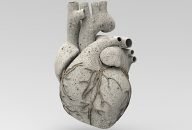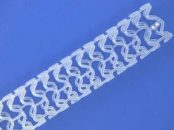Systolic hypertension is more often associated to cardiovascular events. However, diastolic blood pressure should not be disregarded, since it can also predict even worse outcomes. Although systolic blood pressure is very frequently associated to adverse cardiovascular events, by no means should diastolic blood pressure be considered unimportant. Such is the message of this study recently…
Dietary Supplements and Diets Show No Impact on Cardiovascular Risk
Americans spend billions in dietary supplements every year but, in truth, this money is only wasted, according to evidence form a recent study published in Intern Med. Most of dietary interventions and nutritional supplements including multi-vitamins, selenium and antioxidants, do not reduce cardiovascular risk or mortality, according to this large analysis and systematic revision of…
Supervised Exercise and Revascularization for Intermittent Claudication
The combination of optimal medical treatment plus angioplasty plus supervised exercise seems to be the first line of treatment for patients with intermittent claudication, in terms of maximum walking distance and best quality of life. This combination requires a multidisciplinary team for the best possible results. The aim of this study was to conduct a…
Many Guidelines, Much Confusion. Blood Pressure Targets in the Elderly
Seeing as hypertension prevalence and incidence increases with age, treating elderly patients of paramount importance. The AHA/ACC guidelines have lowered cohort hypertension thresholds to >130/80 mmHg, whereas the European guidelines have kept the classic >140/90 mmHg, though recommending lower thresholds for most patients at the same time. Lower than 130/80 mmHg is recommended with the…
Loss in Life Expectancy after Surgical Aortic Valve Replacement
This study found after surgical aortic valve replacement (SAVR) patients had shorter life expectancy, compared against the general population. This loss in life expectancy was significant, especially in young patients. These results provide essential information to advice patients before and after SAVR. This is an observational national cohort study to assess long term relative survival…
Vena Cava Filter for All Patients After Severe Trauma
Until today, there was no evidence warranting the early implantation of a vena cava filter for the reduction of the risk of pulmonary embolism in patients with severe trauma and contraindication to prophylactic anticoagulation. This article, soon to be published in the New England Medical Journal (NEJM), brings us such evidence and we surrender to…
Calcium Scoring: “Location” Seems to Be More Important than “Percentage”
The presence of a high percentage of calcium in the left main coronary artery is independently associated with a 20–30% greater risk for cardiovascular and all-cause death in asymptomatic adults. This highlights the fact that calcium location, and not only amount, is important. Calcium scoring reports from computerized tomography (CT) usually inform only that: how…
Clinical Implications of the New Hypertension Guidelines
Hypertension is the first modifiable risk factor affecting morbidity and mortality in nearly half of the adults in the US. The new ACC/AHA guidelines have issued new standards for the detection assessment and management of high blood pressure. The major change compared against their prior version was stage 1 hypertension definition, defined as systolic blood…
New Promising Alternatives for Mitral Regurgitation
PASCAL transcatheter valve repair system for mitral regurgitation has shown feasibility and safety to treat patients with grade 3+ or 4+, regardless etiology. Regurgitation grade was significantly reduced, and this was accompanied by clinical improvement in functional class, exercise capacity and quality of life. This study soon to be published in J Am Coll Cardiol…
DES with Bioresorbable Polymer vs. Bare Metal Stents in Primary PCI
Long after myocardial revascularization guidelines had established no medical reason justifies the use of bare metal stents (BMS), along comes this study to refresh the old trials comparing drug eluting vs bare metal stents in the context of primary PCI. The problem for many countries is that primary PCI obviously occurs in the context of…









